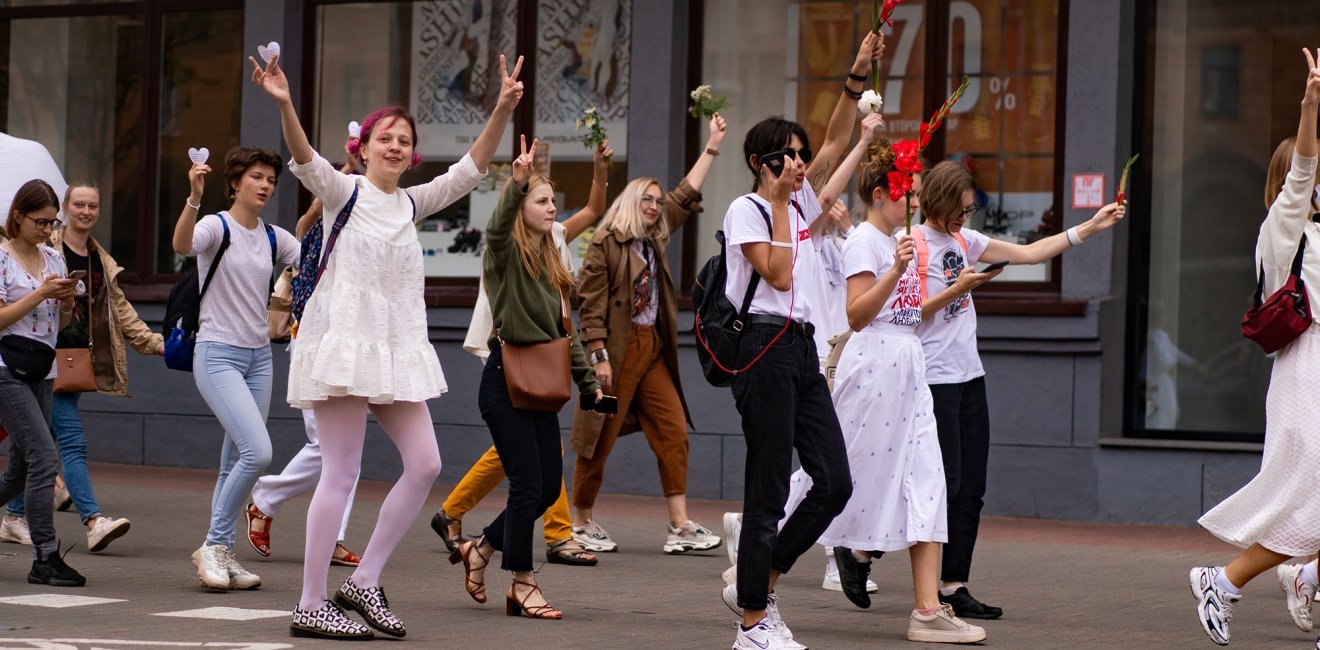
A blog of the Kennan Institute
BY MAXIM TRUDOLYUBOV
When Aleksandr Lukashenko, Belarus’s leader of 26 years, declared a landslide victory in Sunday’s presidential elections, the opposition and large swaths of the population disagreed. Belarusian authorities reacted violently to the citizens’ protest over the election results. More than 6,500 people are reported detained and those emerging from detention prisons tell about beatings and torture. While the situation in the country is in flux, it would make sense to look at the changes in Belarusian society that underlie the conflict.
When Lukashenko came to power in Belarus in 1994, he did so as a pro-Moscow politician. In today’s Belarus, however, he can no longer play that card. Belarus was once the Soviet Union’s most Russianized republic: Belarusian was the language of the villages, whereas the urban population mainly spoke Russian. The language of instruction for the country’s colleges and universities was Russian. Today’s Belarusians still predominantly use Russian for communication, but the public’s attitude to the country’s national heritage has changed dramatically in the ensuing years. During the most recent census, 23 percent of the citizens said they spoke Belarusian at home. This figure was probably an exaggeration, as the historian and anthropologist Pavel Tereshkovich said in an interview. But it means that for many Belarusians, Tereshkovich continued, their language has become a symbol of national identity. In 1996, two years after winning what many in Belarus say was the country’s last free and fair election, Lukashenko held a referendum that gave Belarusian and Russian equal status as official languages. Lukashenko decreed that the colleges that had switched to Belarusian were to go back to teaching in Russian.
In 2014, after Moscow annexed Crimea from Ukraine, Lukashenko took an independent stance and refused to recognize the peninsula as a part of Russia. Realizing that growing trends such as speaking Belarusian and wearing traditional embroidered shirts were becoming popular symbols of national independence, he stopped preventing the spontaneous spread of those cultural icons. However, he did little in terms of real support for the development of Belarusian identity, the Belarusian journalist and political analyst Pavlyuk Bykovsky told me.
The Belarusian language moved to the cities; these days, the majority of those who speak it are urbanites, not villagers. The language is “in vogue,” and many advertisers switched to Belarusian, seeing that customers reacted positively to ads in their national tongue. Speaking Belarusian is a sign of a new national identity: from the “language of the past,” Belarusian has turned into the “language of the future.”
In Belarus, the question of whether to look east or west for strategic partnership is a matter of intense national debate. In 2019, in just one year, the share of those who think Belarus should orient itself toward Russia declined from 60.4 percent to 40.4 percent, the independent research center BAW reported. At the same time, pro-European attitudes surged from 24.4 percent to 32 percent.
This picture may remind some of Ukraine from 2013, when the public was torn between allying with the European Union or keeping the old ties with Russia. But one has to be careful about those comparisons. In Belarus, Bykovsky explains, there are no deep divisions between a pro-European west and a pro-Russian east. The “new Belarus” that emerged in the recent years is largely generational. According to BAW, people with pro-European sentiments dominate the 18- to 24-year-old age group and, from relatively recently, the 25- to 34-year-old age group. In general, Belarusians view Russia favorably: 75 percent think that the two countries have to remain “friendly neighbors, with open borders, without visas or customs.” But they do not agree to become one of Russia’s regions: only 3.7 percent of those polled support full integration. Belarusians want to keep both their ties to Russia and their sovereignty.
During the campaign, Lukashenko hardened his critique of Russia in order to appeal to his voters. He even went as far as arresting a number of private military servicemen from Russia, claiming that they were mercenaries sent from Russia to disrupt the election. At every previous election, Lukashenko claimed foreign interference—from Poland, for example, or Lithuania—so no one was surprised by this claim. But the fact that he arrested Russians meant that the trust and communication between Minsk and Moscow were seriously broken.
Still, Lukashenko is indispensable for the Kremlin. He sits in the middle of the awkward equation that is post-Soviet Belarus. He has managed to keep a certain distance from Russia but has been highly dependent on Moscow’s political and economic support. Belarus is billions of dollars in debt to Russia and has been relying on cheap Russian oil for the country’s two oil processing plants, which mostly work for exports.
Any new leader of Belarus is poised to be both more nationalist and pro-Western than the current one—and so Moscow is not interested in change. Violent suppression of protests is not helping Lukashenko appeal to his Western counterparts, but they are not interested in change, either. The leaders of Latvia, Lithuania, and Poland urged Lukashenko to stop the violence against protesters and said they would be ready to mediate between the Belarusian government and the opposition. On Wednesday, Lithuanian President Gintanas Nauseda said he would help Lukashenko resolve the crisis if Lukashenko releases the detained demonstrators and forms a national council that would include members of civil society. The other option is sanctions.
Belarusian society was passive during Lukashenko’s stay in power, but now it has awakened and is unlikely to go back to political slumber. Young Belarusians will keep putting pressure on a government they consider illegitimate. Belarusian government has crossed the line and has become an even more repressive regime. Force and violence are its only remaining resources.
It is unclear how the civil conflict in Belarus will develop, but Lukashenko probably has enough brute force to crush the protesters. And yet, business as usual is unlikely to continue. Because of Russia’s continued support and Lukashenko’s long rule, Belarus has kept many of the ties that formed the Soviet-era supply chains and even some of its attitudes. But those will come undone as Russia itself has started to raise the prices for its resources for Minsk. Today’s events in Belarus, with both the country’s politics and economy undergoing deep changes, could be seen as a postponed collapse of a part of the USSR that managed to preserve itself for quite a long time.
The opinions expressed in this article are those solely of the author and do not reflect the views of the Kennan Institute.
Author

Editor-at-Large, Meduza

Kennan Institute
After more than 50 years as a vital part of the Wilson Center legacy, the Kennan Institute has become an independent think tank. You can find the current website for the Kennan Institute at kennaninstitute.org. Please look for future announcements about partnership activities between the Wilson Center and the Kennan Institute at Wilson Center Press Room. The Kennan Institute is the premier US center for advanced research on Eurasia and the oldest and largest regional program at the Woodrow Wilson International Center for Scholars. The Kennan Institute is committed to improving American understanding of Russia, Ukraine, Central Asia, the South Caucasus, and the surrounding region through research and exchange. Read more

Explore More in The Russia File
Browse The Russia File
Chechnya as a Model of Modern Russia

Russia’s Indigenous Communities and the War in Ukraine

Gas and Power in a Changing US–Russia Relationship

